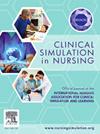Debriefing the escape: Sequential patterns in facilitator strategies for nursing simulations
IF 2.5
3区 医学
Q1 NURSING
引用次数: 0
Abstract
Background
While widely studied in traditional simulations, research on debriefing practices in educational escape rooms remains sparse. This study leverages sequential pattern mining to investigate facilitators’ micro-debriefing in the escape rooms on a critical care scenario.
Methods
About 69 first-semester nursing students were randomly assigned to 32 groups with two to three participants per group. Transcripts of facilitator-student interactions were coded using Dreifuerst’s (2009) debriefing framework, expanded with new categories relevant to the escape room context. Sequential pattern mining was applied to identify patterns in the instructors’ debriefing sequences.
Results
Demonstration (26.3%), reflection (21.6%), and prompting (20.1%) were the most frequent debriefing strategies, while emotion and assimilation were infrequent. Salient sequential patterns included (reflection → integration → prompting), emphasizing knowledge scaffolding and guided decision-making.
Conclusion
Educational escape rooms demand adaptive debriefing approaches that blend traditional and game-specific methods. The study findings inform the design of flexible debriefing frameworks to enhance learning outcomes in escape room simulations for nursing education.
报告逃跑:护理模拟促进策略的顺序模式
虽然在传统模拟中得到了广泛的研究,但对教育逃生室的述职实践的研究仍然很少。本研究利用顺序模式挖掘来调查危重监护情景下逃生室引导者的微观述职。方法将69名大一护生随机分为32组,每组2 ~ 3人。使用Dreifuerst(2009)的汇报框架对辅导员与学生互动的记录进行编码,并扩展了与密室情境相关的新类别。采用顺序模式挖掘的方法识别指导员述职序列中的模式。结果演示(26.3%)、反思(21.6%)和提示(20.1%)是最常见的述评策略,而情绪和同化则不常见。显著的顺序模式有反思→整合→提示,强调知识搭建和引导决策。教育逃脱室需要适应性汇报方法,将传统方法和游戏特定方法相结合。研究结果为灵活汇报框架的设计提供了信息,以提高逃生室模拟护理教育的学习成果。
本文章由计算机程序翻译,如有差异,请以英文原文为准。
求助全文
约1分钟内获得全文
求助全文
来源期刊

Clinical Simulation in Nursing
NURSING-
CiteScore
5.50
自引率
15.40%
发文量
107
期刊介绍:
Clinical Simulation in Nursing is an international, peer reviewed journal published online monthly. Clinical Simulation in Nursing is the official journal of the International Nursing Association for Clinical Simulation & Learning (INACSL) and reflects its mission to advance the science of healthcare simulation.
We will review and accept articles from other health provider disciplines, if they are determined to be of interest to our readership. The journal accepts manuscripts meeting one or more of the following criteria:
Research articles and literature reviews (e.g. systematic, scoping, umbrella, integrative, etc.) about simulation
Innovative teaching/learning strategies using simulation
Articles updating guidelines, regulations, and legislative policies that impact simulation
Leadership for simulation
Simulation operations
Clinical and academic uses of simulation.
 求助内容:
求助内容: 应助结果提醒方式:
应助结果提醒方式:


